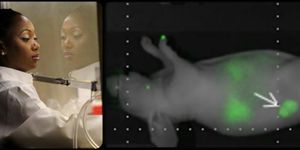A New Way to Measure Gene Activity in Individual Cells
Cells don’t exist in isolation in biology, but each one can provide a window into how things function in an organism. However, it can be extremely challenging to monitor changes in individual cells to learn more about the bigger picture, especially in biological tissues where different types of cells might be mixed in a large group. Now scientists have found a way to track the genetic changes in single cells within a sample of tissue. Reporting in Science, the researchers have called this technique SPLiT-seq.
"Cells differ from each other based on the activity of their genes -- which genes are switched off or switched on," explained senior author Georg Seelig, a UW associate professor in the Department of Electrical Engineering and the Paul G. Allen School of Computer Science & Engineering. "Using SPLiT-seq, it becomes possible to measure gene activity in individual cells, even if there are hundreds of thousands of different cells in a tissue sample."
SPLiT-seq is another name for Split Pool Ligation-based Transcriptome sequencing; it updates traditional methods for assessing gene expression. Typically, gene activity is determined by looking at the RNA levels in a cell; that tells scientists which genes are on, or expressing, and which are off, because the genes that aren’t expressed don’t get translated into RNA. That type of RNA sequencing can reveal a lot about a tissue sample, but not how specific cells within that tissue are behaving. While there are ways to sequence RNA in single cells, they are quite costly. This new method avoids that caveat.
It is not necessary to isolate individual cells for this new SPLiT-seq technique. Instead, a cell population is put through four cycles in which they are split into pools and barcoded. After that, RNA from every cell ends up with a unique barcode sequence, which is included when all of the RNA in the cell is sequenced.
"With these 'split-pool barcoding steps,' we solve a big problem in measuring gene expression: reliably identifying which RNA molecules came from which cell in the original tissue sample," explained Seelig, who is also a researcher in the UW Molecular Engineering & Sciences Institute.
"With that problem addressed, we can begin to ask biological questions about the different types of cells we define in the tissue," said co-author Bosiljka Tasic, Associate Director of Molecular Genetics at the Allen Institute for Brain Science.
The team tested SPLiT-seq by using it on brain and spinal cord tissue from mice. They were able to measure the activity level of about 156,000 genes with SPLiT-seq.
The patterns of gene activity that were revealed by their study indicated that over 100 cell types existed in the tissue samples, and included cells at various stages of differentiation and development.
This tool can deliver these results at low cost, "just a penny per cell," said Seelig in a story by the Allen Institute for Brain Science. That is a significant cost reduction compared to other single-cell sequencing techniques.
The method can help reveal the changes cells undergo as they enter a diseased state, or how tissues develop.
Sources: AAAS/Eurekalert! via University of Washington, Science









